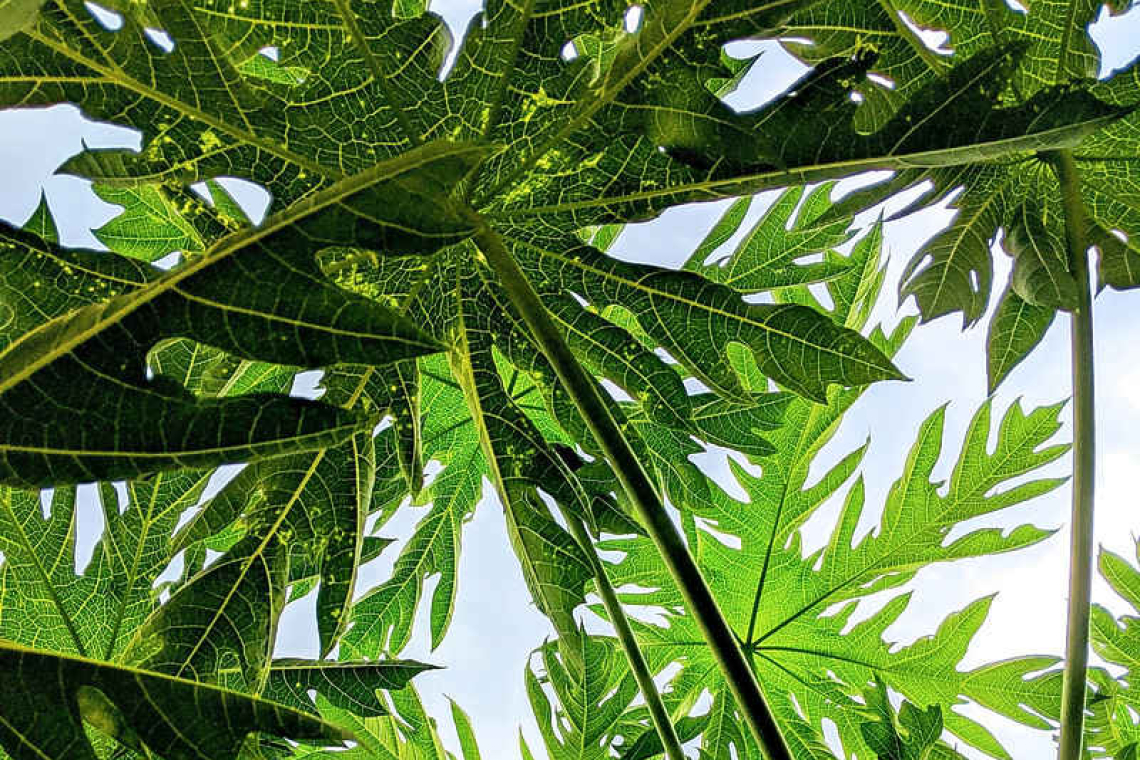By Colin Michie FRCPCH FRSPH FLS RNutr FRSA
Dengue fever is on the increase as global warming allows biting mosquitoes to breed. Leaf juices from a Caribbean tree, papaya, improve treatments for severe dengue.
Spread from the bite of an infected mosquito, dengue is caused by four different viruses. Most forms of dengue are never diagnosed, some may be mild, some are probably diagnosed as other illnesses. A small proportion of patients will develop serious illness. Their blood cannot clot because the numbers of their platelets in their blood fall.
Platelets are microscopic plumbers, normally keeping blood vessels sealed. Should platelet numbers fall, a patient can leak protein or blood from any blood vessel. This is dangerous and potentially lethal, particularly in children. Treating severe dengue requires supportive hospitalisation to prevent damage from low platelets.
There are no specific anti-viral treatments for dengue. The mainstay of protection has been prevention, but the Covid-19 pandemic compromised campaigns against the Aedes mosquitoes. Reported dengue cases published last month, compared with 2020 figures, showed increases of more than seven-fold in Pakistan and 19-fold in Bangladesh.
Carica papaya is an ugly tree with a wonderful fruit. Named originally by Arawaks, papaya was transported, bred and genetically engineered for centuries because of its cherished fruit. Whether eaten green, fresh or pickled, papaya is a treat for all tables. However, there is more to papaya than its fruit. Those large, fingered leaves in its tufted papaya canopy have few recipe books and are rarely sold in supermarkets; but they too are valued as a source of juice; an addition to salads and fish dishes; a relish in meals of maize or as a medicine. Papaya leaves have long-standing agricultural applications, too, as feeds, to help de-worm cattle, goats and chicks, or reduce mastitis in dairy herds.
Across Africa, papaya leaves and their juice have a reputation for being a treatment for many conditions, including fevers in children. In distant Malaysian islands, where traditional medicines have a very different botany, papaya leaves are again widely recommended by folk medicine practitioners for fevers. Beneficial effects are claimed, too, for teas prepared from dried papaya leaves. These traditional treatments for fevers existed long before Dr Louis Beauperthuy of St. Maarten described the association between fevers and mosquito bites long before the diseases they transmit were given their current names.
Recent investigations in laboratory culture dishes, animal models and patient trials in Indonesia, Malaysia and India support several specific benefits of papaya. These leaves contain a wide variety of active ingredients that may influence human health. They include minerals, vitamins, many phenolic compounds, flavonoids and glycosides. Their combined activities reduce inflammation; they are antibacterial and antiviral. Reduction in blood sugar levels have been measured, along with anti-tumour effects which were observed in those culture dishes. At present, these findings are positive. It is not known if treatments are curative, but papaya preparations have reduced Hospital inpatient days for dengue patients. No safety issues have been found other than mild allergic reactions to the papain enzyme in the leaf preparations, found in a small number of individuals.
Papaya leaf juice has at least three effects on platelets. First, some of its molecules remove free radicals. This limits damaging effects of dengue on platelet membranes. Antioxidant effects are found in other parts of our diet too – in a cup of coffee or a fresh radish – but papaya leaves are particularly powerful. Second, papaya stimulates the bone marrow to generate more new platelets from stem cells. Third, papaya fortifies the immune system to reduce the normal recycling of platelets, ensuring they work more effectively and for a longer period.
Such explorations show the great value of carefully examining the basis of ethnobotanical practices. They might lead to treatments of other, different disorders. For instance, in Indonesia a daily dose of papaya juice is recommended to prevent malaria – but is this sufficient for dengue? Just how effective is papaya as a treatment or preventative against other infectious viruses causing fevers such as chikungunya, yellow fever and zika? What is the best way to use these leaves – once, twice or more often each day? Is a tea from dried leaves as effective as freshly-prepared juice? How about children – can leaf juice be used to prevent fever?
The Greek playwright Euripides wrote over 2,000 years ago that one should “Judge a tree from its fruit, not from its leaves.” He did not know of papaya and missed a crucial truth: botanical health-promoting treasures may hide in other parts of a plant. Although papaya fruit may have evolved for Caribbean birds to spread their seeds, it was humans that really drove papaya exports. Papaya’s domestication became embedded in our traditional medical lores and we became aware of the pharmacological factories in the leaves of this amazing tree. Our challenge now is to apply this knowledge in managing the escalation in dengue fever.







